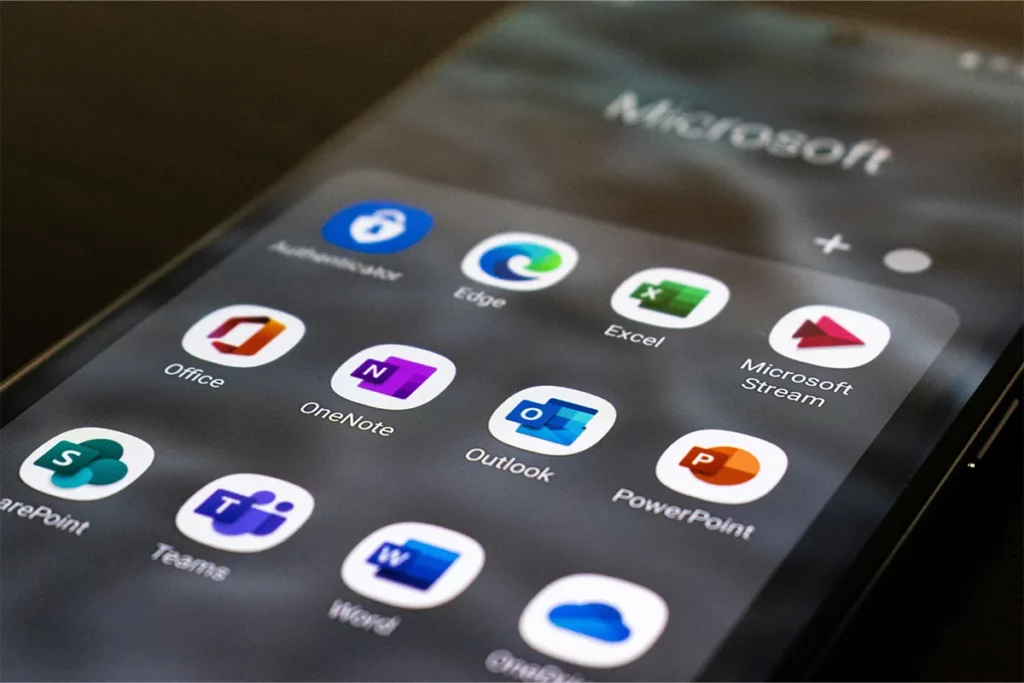Do you want to make your Outlook better? This guide gives you steps to change views in Outlook. You can make your inbox a custom area for managing your emails.
American workers receive about 121 emails each day, according to Venngage. It can be hard to manage this many emails without good organization.
Microsoft Outlook has a solution that is practical: the Views feature. This feature helps you change a messy inbox into a neat workspace with a few easy changes.
In this guide, you will find 10 simple ways to change views in Outlook. You will learn how to create a custom email space, highlight important emails, track team conversations, and reduce clutter in your inbox.
We will cover:
- Understanding views in Outlook
- How to change views in Outlook
- How to customize views in Outlook:
- Enable conversation threads
- Activate dark mode to lessen eye strain
- Adjust the reading pane position
- Change column width and arrangement
- Activate Focused Inbox
- Customize the Outlook Ribbon
- Change text size and spacing
- Set up the to-do bar for tasks
- Personalize the quick access toolbar
- Set email preview options
Let us start.
What are views in Outlook?
Views in Outlook are settings that decide how your email looks. These settings help you control how information shows in your inbox. You can change how emails, calendar events, and tasks appear.
With views, you can make your Outlook setup fit your style. You can choose a clean inbox or a detailed view that shows all email details. You can change column widths, group emails, and more to match your way of working.
How do you change views in Outlook?
Outlook has three views. They are Compact, Single, and Preview. You can use them right away.
- Compact: The Compact view shows emails in a small format. This view lets you see more emails on your screen. It is good for a messy inbox.
- Single: The Single view shows one email at a time. It uses the full width of your screen. This view helps you read each email without distractions.
- Preview: The Preview view shows a short part of each email. You can see this next to the list of messages. This way, you can look at the start of each email without opening it.
To change your view in Outlook, follow these steps:
- Log into your Outlook account.
- Go to the View tab.
- Click on Change view.
- Choose your preferred view.
By doing these steps, you can switch views in Outlook. This helps you manage your emails better. It helps you work faster, too. The main benefit of Outlook is that you can change these views to fit your needs.
How to Personalize a View in Outlook
Outlook lets you change many things to make your email workspace better. This guide will show you over 10 easy ways to change your Outlook view.
1. Turn on Conversation Threads
Conversation threads group emails together. This helps you follow long discussions better. It is important to see the main conversations. Here is how to turn on this feature:
- Open Outlook.
- Go to the View tab.
- Check the box that says Show as Conversations.
- Select All mailboxes.
This change will help you find important emails in long threads more easily. To see all messages in a conversation, click the arrow next to the top email.
Use this feature if you work with team members. It helps if you manage projects with many emails and need a good way to handle ongoing talks.
2. How to Turn on Dark Mode for Your Eyes
Dark mode in Outlook helps to reduce eye strain. It is good for low light or if you read emails for a long time. Here is how you turn on dark mode:
- Sign into Outlook.
- Click on the Settings gear icon in the top right corner.
- Go to General, then Appearance.
- Under “Dark mode,” choose Dark.
- Click Save.
Now, your Outlook will show a darker theme that is easier on your eyes. You can also choose a theme color or add a background image.
Use this feature if you work late at night. It helps if you read emails for a long time or if you like a dark background for comfort and less blue light.
3. Changing the Reading Pane Position
The reading pane in Outlook shows emails, so you do not need to open them in a new window. Changing its position can help your email work better. Here is how to change its position:
- Open Outlook.
- Go to Settings.
- Choose Mail, then Layout.
- Pick the Right, Bottom, or Hide reading pane.
- Click Save.
Now, your reading pane will be in the place you picked, or it will be hidden if you select “Hide reading pane.”
Use this change if you want to see more emails at one time on a widescreen monitor (Right). It helps if you want to see more details before reading (Bottom). You can focus on one task or make your list view bigger (Hide reading pane).
4. Customizing Column Width and Order
Changing the width and order of columns in Outlook helps you show important information. It helps you manage emails better, too. Here are the steps to set up your columns:
- Open Outlook on your desktop.
- Click the View tab.
- Select View Settings.
- Click Format Columns.
- Change the column size and order as you want.
- Click OK.
Your inbox will now show the columns in the size and order you want. You can also make the columns bigger or smaller by dragging the line between them.
Use this feature if you want to focus on important information, like the sender or subject. You can also add a “Size” column to help manage your mailbox storage better.
5. Activating Focused Inbox
The Focused Inbox feature in Outlook sorts your emails into two tabs: Focused and Other. The Focused tab shows your most important emails. The Other tab has less urgent messages.
To turn on Focused Inbox:
- Start Outlook.
- Click the gear icon for Settings.
- Go to Mail and then Layout.
- Choose to Sort messages into Focused and Other.
- Click Save.
Your inbox will now be divided into Focused and Other tabs. Outlook will sort your emails based on importance. You can move emails between tabs to make sorting better.

Use this feature if you get many emails and need to find key messages quickly. This helps you focus on important emails and less urgent ones.
6. Tailoring the Outlook Ribbon
The Outlook ribbon has all the tools you need for email and calendars. Changing this ribbon can help you work better. It gives you faster access to commonly used commands. Here are the steps to adjust it:
- Start Outlook.
- Click the three dots on the ribbon.
- Choose Customize.
- Edit or remove groups or make new ones.
- Add buttons to these groups or remove buttons from these groups.
- You can save your changes now.
Your ribbon shows your chosen tabs and commands. If you make an error, you can restore the default setup. Click the Reset button.
This is good for users that need fast access to commands. These commands are usually hidden in menus. This is also for people who want a simple interface with only the necessary tools.
7. Adjust text size and spacing in Outlook.
This can make things easier to see and help your eyes. Here is how to set these preferences:
Set text size and spacing in Outlook.
- Open Outlook.
- Click on the Settings gear icon.
- Go to Mail and then go to Layout.
- Choose Small, Medium, or Large for Text size and spacing.
- Click Density in the Outlook ribbon.
- Pick Roomy, Cozy, or Compact.
Your interface shows text with your chosen size and spacing now. For quick changes, use keyboard shortcuts: press Ctrl and the + or – keys to zoom in or out.
This is best for users who find the default text size not comfortable. This is also for people who need different line spacing. This can make reading easier, especially if you often spend time on emails or need help with visual preferences.
8. Configuring the To-Do Bar in Outlook
The to-do bar in Outlook helps you manage your calendar, tasks, and contacts. This happens all in one place. Here is how to change this feature:
Adjust the to-do bar in Outlook.
- Open Outlook.
- Navigate to the View tab.
- In the Layout group, click the To-Do Bar.
- Select which things to show (Calendar, People, or Tasks).
Now, you see your calendar, favorite contacts, or tasks from your inbox. You can drag emails to the Tasks section. This adds them to your to-do list fast.
Suitable for Users who want to see their schedule, tasks, and contacts all in one place while staying in the inbox. This reduces the need to change between different sections of Outlook.
9. Customizing the Quick Access Toolbar
The Quick Access Toolbar is a useful way to reach your most used commands quickly. Changing it to fit your needs can help you work better. Here is how to change this feature in Outlook:
Modify the Quick Access Toolbar in Outlook
- Open Outlook on your desktop.
- Click the small down arrow on the Quick Access Toolbar.
- Select More Commands.
- Choose the commands you want to add and click Add.
- Click OK to save your changes.
Your Quick Access Toolbar will now have the commands you chose for easy access. To add commands from the ribbon, right-click on the command and choose Add to Quick Access Toolbar.
Ideal for: Users who want their commands to always be easy to reach, no matter which tab is open in Outlook. This change helps by reducing the number of clicks for using common features.
10. Adjusting Email Preview Settings
Email preview settings let you see parts of your emails without opening them. This helps you check important messages quickly. Here is how to set this feature in Outlook:
Set Up Email Preview in Outlook
- Open Outlook.
- Go to Settings.
- Go to Mail > Layout.
- Under Message Preview, choose to show 1, 2, or 3 lines of text, or choose to Hide Preview text to show only the subject line.
- Click Save to use your preferences.
Your inbox will now show email previews based on your choice. On mobile devices, you can swipe left or right on a preview to quickly archive, delete, or flag emails without opening them.
This is suitable for users who manage many emails. These users need to find urgent messages quickly. More preview lines give a detailed view that helps to prioritize actions. Fewer lines allow for more emails to show at the same time.
The Final Word
Changing views in Outlook is more than just changing how it looks. It is a strong feature. This feature helps users create a customized workspace. It helps to organize emails better. It also helps users boost productivity.
In this guide, we show how to switch between default views. We also give more than ten ways to change different parts of your Outlook interface. This includes the navigation pane, Quick Access Toolbar, and reading pane. Using DejaFlow makes Outlook work better. It syncs contacts, calendars, and tasks across different platforms. It does not offer many options for changing views, like adjusting panes or toolbars. It gives good integration for managing personal and professional schedules.

